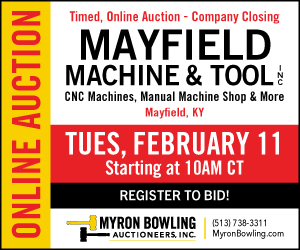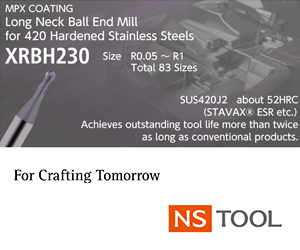
Traditional inspection methods and devices, like surface plates, height gauges, air gauges and dedicated hard gauges, can be expensive to purchase and maintain. They also can be rendered obsolete as jobs come and go. In addition, a gradual increase in the use of geometric dimensioning and tolerancing has made the application of hand tools challenging when measuring things like the true position of holes. Coordinate measuring machines have proliferated in this evolving manufacturing environment.
Introduced in the late 1950s, CMMs have become increasingly common over the past two decades. CMMs have not always been affordable for some part manufacturers. However, as advances in software, machine construction and manufacturing techniques have significantly reduced the cost of CMMs, industry has seen a steady increase in their use.
A CMM can be more desirable than measuring with manual instruments, such as micrometers, calipers and height gauges, because a CMM automates the process. Automating part measurement with a CMM can decrease the need for skilled personnel in the same way a CNC machine tool can. It is common for experienced personnel to program and set up CMMs and then have other employees operate them.
Removing Rigidity
Flexibility is another common reason for buying a CMM. Hard gauges, as their name implies, are rigid. They are built for one part or family of parts—often for measuring just one feature. If the part or process changes, hard gauges must be reworked. CMMs, on the other hand, require only a revision in their program.
Paired with machine tools in a manufacturing cell, a CMM can collect, process and transmit data to be acted on by the other manufacturing equipment. This arrangement substantially lessens the need for humans to interact with the manufacturing process, thereby eliminating opportunities for error.
Although acquisition costs have decreased, the overall ownership costs can be daunting, with calibration and repair being most significant. Calibration of a CMM necessitates a visit from the manufacturer, often lasting several days, with costs that can run easily into the tens of thousands of dollars. Most mechanical repairs of a CMM require recalibration after completion, so ensuring that machines receive proper maintenance and care to prevent mechanical failure is critical to controlling costs. Fragility of CMM technology—sometimes real, sometimes perceived—often drives users to segregate CMMs from the shop floor by installing them in climate-controlled quality labs or special enclosures.
Keeping a CMM sequestered from the shop floor calls for the parts needing inspection to travel to the CMM, wait for inspection and then travel back. If deviations are found and the machine tools must be adjusted, the process will begin again. The result is a lot of nonvalue-added activity.
CMM power and flexibility have encouraged manufacturers to aggressively adopt CMM technology, but the fragility of the machines historically has made their use inefficient. Lean manufacturing and basic economics of production have driven demand for machines that can be near the work.
On the Move
Portable measurement arms with CMM-like functions have been available for many years. These arms were the original answer to the challenges of lab-based CMMs. The arms are effective for infrequent measurement, field work or R&D-type activities but do not fit into a production environment well as they are manually operated and tend to be less accurate. Precision machining requires more advanced technology than the portable arms offer.
CMM manufacturers attacked this conundrum by introducing advanced machine designs, improving construction techniques and updating software, yielding a new class of hardened CMMs capable of living on the shop floor among the other machines. Manufacturers market these as “shop-floor CMMs.”

Mitsubishi Hitachi Power Systems does not house its CMMs in a laboratory or special room. This one is integral to a welding cell, and its measurements guide the assembly process. Image courtesy of C. Tate
Besides producing more robust machines, CMM makers have started creating machine configurations that improve efficiency of the inspection and manufacturing processes. Machines are becoming more compact, which allows them to be integrated into manufacturing cells much easier. CMMs traditionally have been bridge-style machines with stationary tables to support the work and with a movable bridge to carry the ram and probe perpendicular to the table, like a vertical machining center.
Newer designs offer an orientation like that of a horizontal machining center, where the probe is held parallel to the table. Manufacturers also have begun offering features like tactile scanning, optical measurement and industrial internet of things connectivity to enhance the capabilities of CMMs, making them more powerful tools.
While working at a cutting tool manufacturer, I had the opportunity to see firsthand how a floor-based CMM could drive significant improvements. The company manufactured special drills in a robotic cell where the drills were periodically inspected using a lab-based optical system. Each inspection took 45 to 60 minutes, and we routinely wasted a shift at machine changeover.
To overcome this issue, a shop-floor CMM with tactile scanning and optical inspection was purchased and positioned in the cell. Inspection time was reduced to four minutes, and data was provided in a spreadsheet that told operators exactly which offset to adjust with magnitude and direction. Changeover time was reduced to 10 minutes.
Putting CMMs on the manufacturing floor directly improves productivity and efficiency. It is true that inspection is a nonvalue-added activity to customers because they rarely are willing to pay for inspection like they do for welding, forming, machining or assembly.
Despite that viewpoint, inspection, testing and monitoring will never disappear from manufacturing. Integration of CMMs onto shop floors and as a component of manufacturing cells helps decrease shops’ nonvalue-added activity and increase the amount of time they have to add value through other processes.
Related Glossary Terms
- calibration
calibration
Checking measuring instruments and devices against a master set to ensure that, over time, they have remained dimensionally stable and nominally accurate.
- computer numerical control ( CNC)
computer numerical control ( CNC)
Microprocessor-based controller dedicated to a machine tool that permits the creation or modification of parts. Programmed numerical control activates the machine’s servos and spindle drives and controls the various machining operations. See DNC, direct numerical control; NC, numerical control.
- lean manufacturing
lean manufacturing
Companywide culture of continuous improvement, waste reduction and minimal inventory as practiced by individuals in every aspect of the business.
- machining center
machining center
CNC machine tool capable of drilling, reaming, tapping, milling and boring. Normally comes with an automatic toolchanger. See automatic toolchanger.
- parallel
parallel
Strip or block of precision-ground stock used to elevate a workpiece, while keeping it parallel to the worktable, to prevent cutter/table contact.
- precision machining ( precision measurement)
precision machining ( precision measurement)
Machining and measuring to exacting standards. Four basic considerations are: dimensions, or geometrical characteristics such as lengths, angles and diameters of which the sizes are numerically specified; limits, or the maximum and minimum sizes permissible for a specified dimension; tolerances, or the total permissible variations in size; and allowances, or the prescribed differences in dimensions between mating parts.










